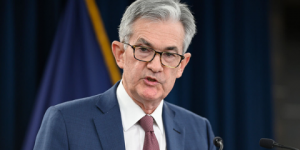Welcome to the September 2021 Investment Update for the Switzer Dividend Growth Fund (SWTZ or the Fund). Click here to download the report.
Performance Summary
The portfolio delivered a return of -0.40% over the month of September, compared with the S&P/ASX 200 Accumulation Index return of -1.85%.
Over the past 12 months, SWTZ has paid a distribution yield of 2.66%, or 3.74% including franking credits. Distribution yield is calculated as the distributions received over the 12 months to 30 September 2021 relative to the unit price at the beginning of the period.
Given its focus on income and capital preservation, over the long term we expect SWTZ to marginally underperform in rising markets and marginally outperform in falling markets.
Market Commentary
Global markets saw a volatile September. The ASX 200 fell 1.85% for the month, but still managed to grow 1.71% for the first quarter of fiscal year 2022. The fall was largely driven by concerns that Chinese property giant Evergrande Group would fail with more than US$300 billion in debt.
The Energy sector was the biggest winner in September, rallying 16.38%, followed by Utilities (+2.07%) and Financials (+1.46%). Materials was the worst-performing sector falling 12.09%. Following China’s clampdown on the property sector and pollution, cutbacks in steel production caused iron ore prices to continue to plummet. Health Care and Consumer Staples also fell by 5.50% and 4.43%, respectively. This month also marked the worst September for both the S&P 500 and the Dow Jones Industrial Average since 2011, which slid 4.8% and 4.3%, respectively.
The latest Federal Open Market Committee (FOMC) meeting signalled a slightly more hawkish tone, where Chair of the Federal Reserve, Jerome Powell suggested that tapering could start in November 2021 and end around the middle of 2022, implying a ~$15 billion reduction in bond buying each month. Bond yields and the US dollar both rose. The yield on US 10-year Treasury Inflation-Protected Securities (TIPs) has increased by more than 30 basis points since early August. While more FOMC members expect an earlier start to the rate hike cycle, the pace of adjustment is expected to be gradual.

Australia’s unemployment rate fell to 4.5%, its lowest point in almost 13 years. It has been cushioned by a ~1% drop in the participation rate (65.2%) and the government’s business support payments. However, the effective unemployment rate is higher at 6.3% and the underemployment rate increased to 9.3%.
The manufacturing sector in Australia continued to expand in September, with the Purchasing Managers’ Index (PMI) posting 56.8 in September, up from 52.0 in August. Consumer sentiment and business conditions remain above average. However, suppliers’ delivery times continued to worsen significantly which, alongside increased demand, led to severe price pressures for the manufacturing sector.
Australia now has 56% of its population over the age of 16 fully vaccinated. The RBA has commented that the COVID-19 Delta outbreak delayed, but not derailed, the economic recovery. With the delay approaching its end, more substantial tapering is expected from 2022.
Portfolio Commentary
The indomitable optimism that has fuelled risk assets to be priced to perfection was punctuated by more sober expectations in September. Notably, after 11 sequential months of positive returns, the ASX 200 contracted in September by concerns of slowing earnings growth and the Federal Reserve signalling it is ready to tighten monetary policy.
Investors have enjoyed a long stretch of share price gains bolstered by an extraordinary recovery in company earnings and highly accommodative policy settings, underpinned by government spending and record low-interest rates. The combination of these factors has led the markets to recent record highs.
Principally, five key risks are currently weighing on stock market sentiment and the trajectory of corporate profits: (1) A slowdown in China’s economic activity evident in its commodity-intensive infrastructure and property sectors; (2) rising energy costs and supply disruptions; (3) ongoing global supply chain bottlenecks; (4) the negative impact of the NSW and Victoria lockdowns; and (5) potential monetary tightening by the US Federal Reserve leading to rising bond yields weighing on risk asset valuations.
On an attribution front, the Financials and Energy sectors provided the greatest contribution to overall index returns for September, while Materials was the worst-performing sector. Positive contributions for the portfolio were driven by Santos, the Commonwealth Bank of Australia and Macquarie Bank. Whereas BHP Group, Wesfarmers and Northern Star Resources weighed on attribution.
We firmly believe that SWTZ’s weighting, tilted toward the attributes of Quality (earnings resilience & industry leadership) and Value (margin of safety), are warranted. A cash weighting of ~7% also provides us the flexibility to invest counter cyclically as investment opportunities emerge. We can deploy our cash to existing stocks in the portfolio and/or stocks on our active watchlist.
Portfolio Outlook
The frequency and magnitude of earnings upgrades that characterised the June 2021 reporting season is now showing signs of tangible fatigue. The profits outlook for the ASX 200 has moderated with consensus forecasts for June 2022 being revised to 12% earnings per share (EPS) growth, down around 3% from the peak of earnings optimism at the start of August. We expect EPS growth to decelerate further in the coming months.
With equity valuations elevated, coupled with earnings downgrades, we have further shifted the portfolio towards defensive assets. Recent weakness in Amcor and Brambles provides an opportunity to reconsider offshore earners with strong market shares facing into the Consumer Staples sectors.
Investment Objective
The Switzer Dividend Growth Fund is an income-focused exchange-traded managed fund with a mix of yield and quality companies. The objective of the Fund is to generate an above-market yield while maximising franking where possible and deliver capital growth over the long term. We select companies that, in aggregate, generate sustainable dividend income. The Fund is characterised by a strong and diverse portfolio of companies that exhibit good cash flows and strong business models.
DISCLAIMER: AGP Investment Management Limited (AGP IM) (ABN 26 123 611 978, AFSL 312247) is a wholly owned subsidiary of Associate Global Partners Limited (AGP) (ABN 56 080 277 998), a financial institution listed on the ASX (APL). AGP IM is the Responsible Entity and Vertium Asset Management Pty Ltd is the investment manager of Switzer Dividend Growth Fund (Quoted Managed Fund) (ARSN 614 066 849) (the Fund).
This material has been prepared for general information only. It does not contain investment recommendations nor provide investment advice. It does not take into account the objectives, financial situation or needs of any particular individual. Investors must, before acting on this material, consider the appropriateness of the material.
Any references to ‘We’, ‘Our’, ‘Us’, or the ‘Team’ used in the context of the portfolio commentary, is in reference to Vertium Asset Management Pty Ltd, as investment manager for the Fund.
Neither AGP IM, AGP, their related bodies corporate, entities, directors or officers guarantees the performance of, or the timing or amount of repayment of capital or income invested in the Fund or that the Fund will achieve its investment objectives. Past performance is not indicative of future performance.
Any economic or market forecasts are not guaranteed. Any references to particular securities or sectors are for illustrative purposes only and are as at the date of publication of this material. This is not a recommendation in relation to any named securities or sectors and no warranty or guarantee is provided that the positions will remain within the portfolio of the Fund.
Investors should seek professional investment, financial or other advice to assist the investor determine the individual tolerance to risk and needs to attain a particular return on investment. In no way should the investor rely on information contained in this material.
Investors should read the Fund’s Product Disclosure Statement (PDS) and consider any relevant offer document in full before making a decision to invest in the Fund. The Fund’s Target Market Determination and other relevant information can be obtained by visiting www.associateglobal.com.









